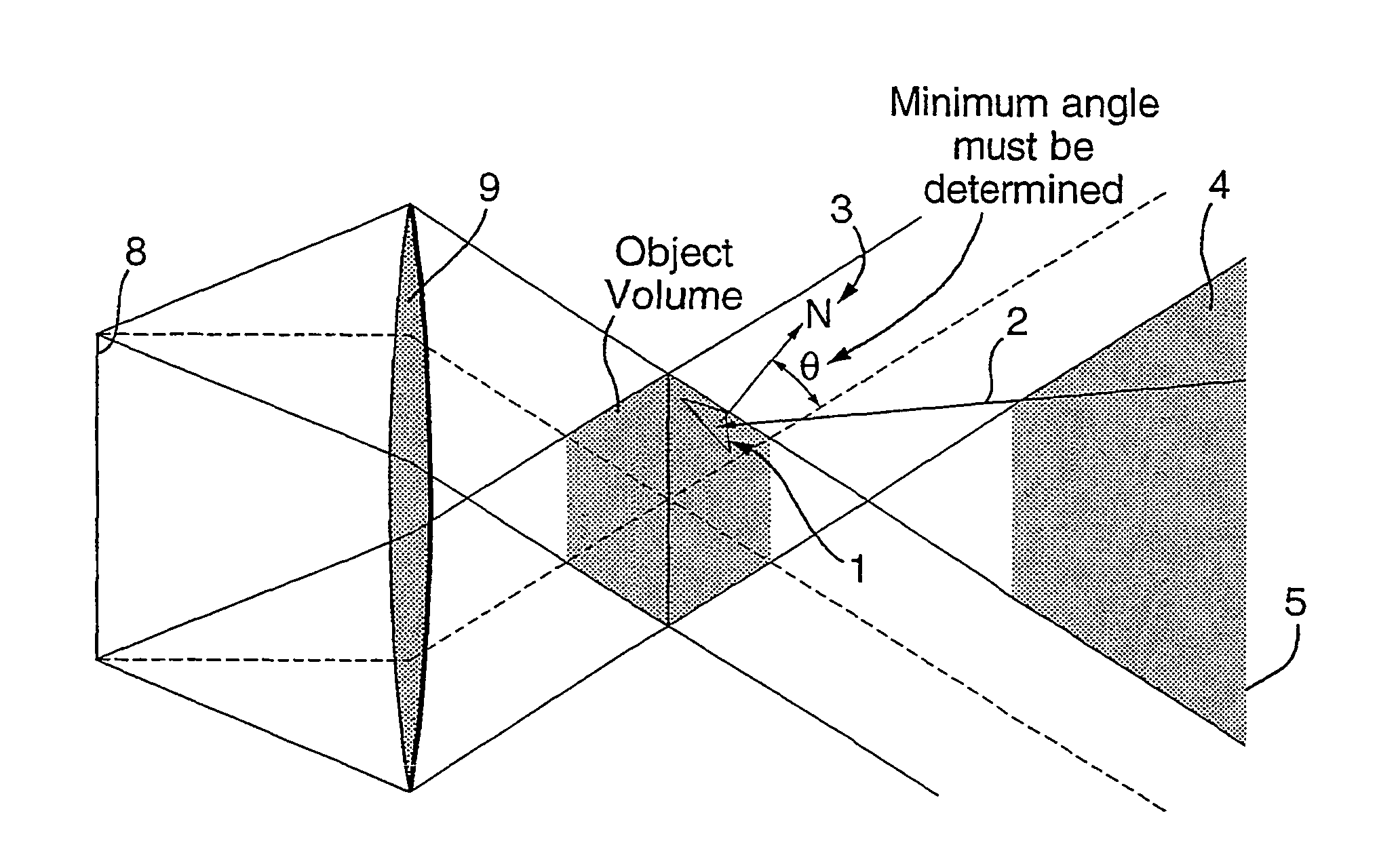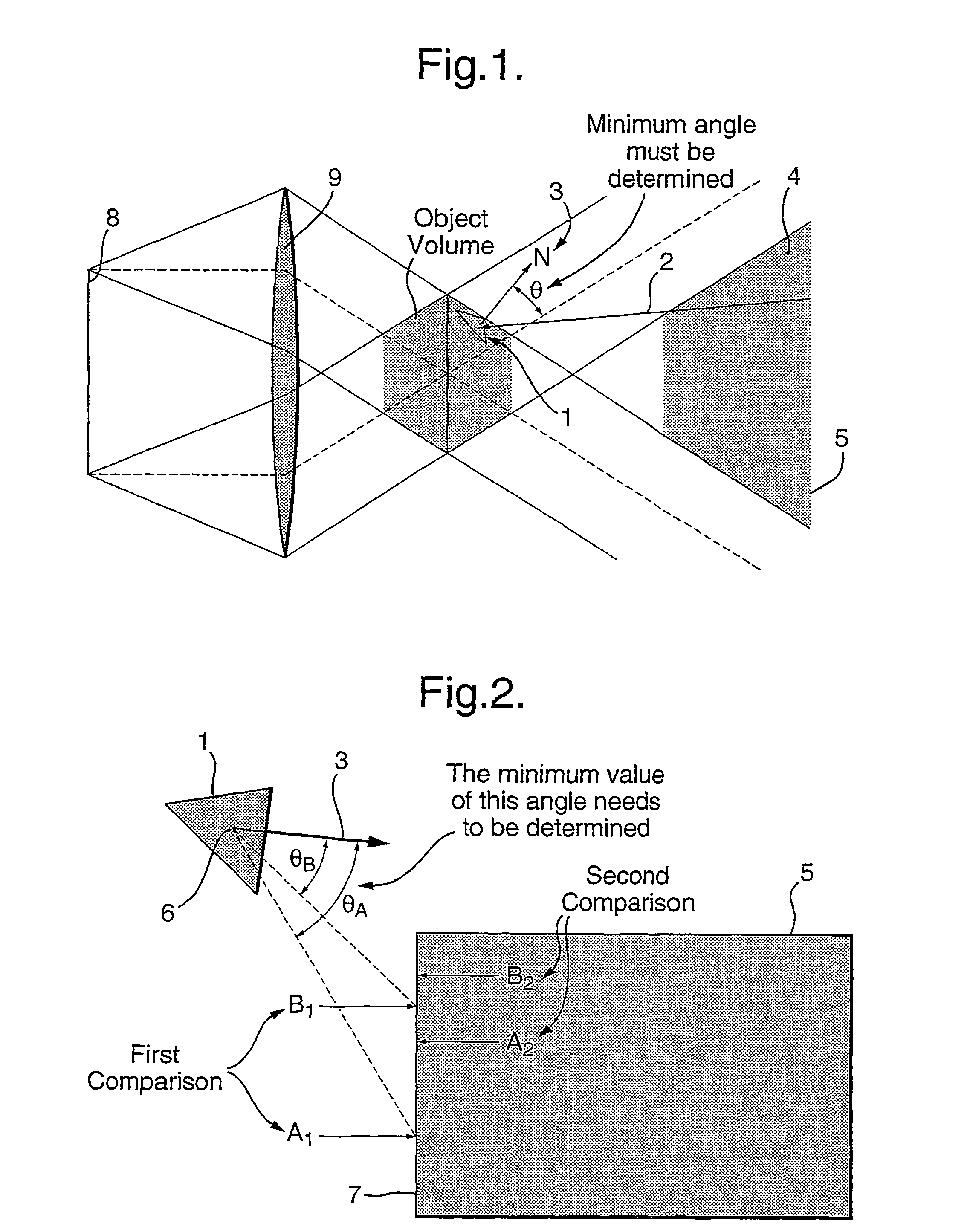Three dimensional display
a three-dimensional display and display technology, applied in the field of three-dimensional display, can solve the problems of not all facets, computation effort is needed to process each of the points, etc., and achieve the effect of more computation effor
- Summary
- Abstract
- Description
- Claims
- Application Information
AI Technical Summary
Benefits of technology
Problems solved by technology
Method used
Image
Examples
Embodiment Construction
[0024]One embodiment of the current invention will now be described in detail, by way of example only, with reference to the accompanying drawings, in which:
[0025]FIG. 1 diagrammatically illustrates a plan view of part of the display system, showing a facet with its normal vector N projected outside of the view volume, and a vector V projected into the view volume.
[0026]FIG. 2 illustrates the method currently used to find vector Vmin.
[0027]Each facet needs to be examined to see if dilution can be applied to it. If a facet is found to have a normal that intersects with the view volume then to maintain sufficient density over all points in the view zone, it should not have it's point density reduced, and so it will be given a dilution factor of 1.0. For convenience, the present embodiment projects a normal from the centre of the facet in question, although generally any normal can be used. As the facets are in general very small, there is little error in doing this. FIG. 1 shows a fac...
PUM
 Login to View More
Login to View More Abstract
Description
Claims
Application Information
 Login to View More
Login to View More - R&D
- Intellectual Property
- Life Sciences
- Materials
- Tech Scout
- Unparalleled Data Quality
- Higher Quality Content
- 60% Fewer Hallucinations
Browse by: Latest US Patents, China's latest patents, Technical Efficacy Thesaurus, Application Domain, Technology Topic, Popular Technical Reports.
© 2025 PatSnap. All rights reserved.Legal|Privacy policy|Modern Slavery Act Transparency Statement|Sitemap|About US| Contact US: help@patsnap.com



